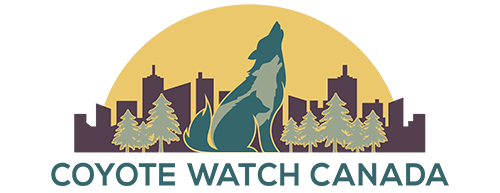By Michael Howie
Coyotes have been a part of my community for generations. But for most of that time, they were unseen, and rarely heard.
In the last few years, sightings began. They were in backyards, they were accused of taking cats and their mournful howls could be heard at night.
The bedroom community of Oakville was in a state of fear.
I was fascinated.
Primarily a police beat journalist, I’d dealt with various types of organized crime, drug rings, burglars and serial bank robbers. I had spent a great deal of my career trying to understand criminals in an attempt to better myself as a reporter in covering crime stories.
When coyotes first began appearing, I simply interviewed local animal control officers or educators to pass on the basics: don’t feed coyotes, leave them alone and they’ll leave you alone.
But the insatiable fear of the community kept growing. The reports of interactions were increasingly alarmist and it seemed the coyotes were being blamed for everything.
My belief was that coyotes didn’t have a voice, so the principal tool of a reporter – the interview – was useless. I began reading texts and making calls outside of my area to experts. The more I read, the more I began to understand.
The stories I needed to write were not about coyotes, but about us: humans. We were the story. The coyotes were doing what they had always done, and done better than any other species on the continent: survive. It was our way of living that was changing their habits and making them more visible.
I also learned that coyotes do have a voice. The way they act, from guard hairs to vocalizations, is a distinct language. It’s not that animals in nature don’t speak, it’s that we, humans, forgot how to listen.
With advice from the greats in the field – Marc Bekoff, Camilla Fox, Stanley Gehrt, Lesley Sampson and Shelley Alexander – my knowledge base expanded tenfold. I started reading other news stories and seeing the discrepancies in their facts – or lack thereof.
I learned how to identify key signs in behaviour or activity, and knew who to call to find out more. I learned how to look deeper and find the truth, hidden amongst the obtuse facts. I’ve since won awards for my editorials about coyotes. My observations and reports are used internationally by animal advocacy groups. I now speak regularly about media sensationalism and wildlife.
The coyote taught me how to do my job better. The coyote taught me how to listen.

